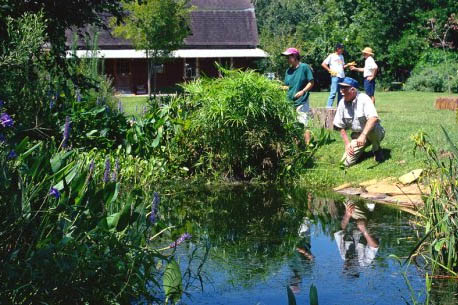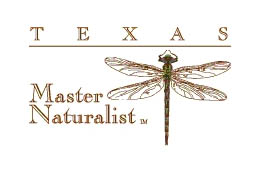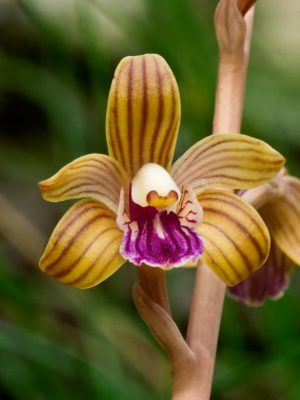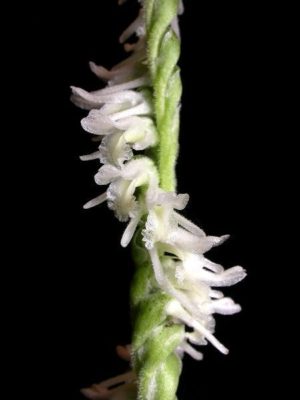
Orchid conservation is an on-going local project in Texas
When most people think of orchids, Texas is not the first place that comes to mind. This is true, even for Texans. However, there is a group which actively pursues finding, cataloguing, and tracking orchids native to the area with the intent of protecting their habitat. In other words, orchid conservation has gone local!
In February 2015, I began training in the Texas’ Master Naturalist Program, taught by the North Texas Master Naturalist organization. I feel like I am back in school and I am having a wonderful time learning all sorts of interesting things about my home state. The program includes three months of weekly classes, a number of field trips, a class project, and a set number of volunteer hours involving conservation efforts. I expect to receive my certification in in December 2015..
The Master Naturalist Program is simply awesome. It is sponsored jointly by the Texas Parks and Wildlife Department and Texas A&M Agrilife. About 80 of us attend 3-hour classes every Tuesday evening for 3 months. Experts teach us about Texas eco-regions, soils, weather, animals, plants … you name it, we are learning about it. Along with our classroom experience, we have trips for field training in prairie, wetland, and forest environments, and also a variety of opportunities to volunteer in local parks and nature centers.
So, why would an orchid lover like me go to this much trouble to learn about nature in Texas? After all, Texas is not exactly famous for its proliferation of orchids growing in the wild.
 There is a good reason for it. Through the Master Naturalist Program I am getting a level of appreciation of nature that I did not have before. For example, if you happen to have a copy of the book Wild Orchids of Texas by Joe Liggio and Ann Orto Liggio, you will see that the book’s organization follows the 10 natural regions of Texas (eco-regions). The weather conditions, soil, and surrounding conditions, like shade and type of associated plants, all play a key role in determining where Texas orchids are found and when they bloom. Of course, this makes perfect sense, since our Texas orchids are all terrestrial.
There is a good reason for it. Through the Master Naturalist Program I am getting a level of appreciation of nature that I did not have before. For example, if you happen to have a copy of the book Wild Orchids of Texas by Joe Liggio and Ann Orto Liggio, you will see that the book’s organization follows the 10 natural regions of Texas (eco-regions). The weather conditions, soil, and surrounding conditions, like shade and type of associated plants, all play a key role in determining where Texas orchids are found and when they bloom. Of course, this makes perfect sense, since our Texas orchids are all terrestrial.
Which brings us to another aspect to consider. While the Phals we purchase at a local store will happily bloom on our windowsills, these Texas native terrestrials require us to go to where they grow in the wild in order to enjoy their beauty. If you ever have the pleasure to find an orchid in its native Texas habitat, please know that it is illegal to remove plants from public land. Besides, native terrestrials rarely survive in our greenhouse conditions. They are highly tuned to their environment, and small changes in their surroundings can be lethal.

Hexalectris spicata orchid – native to Texas
I’m looking forward to the field training yet to come in the Master Naturalist Program. Dallas County is in the Black-land Prairie eco-region (Piney Woods to our east, and Oak Woods & Prairie regions to our west). One outing I have already participated in was a trip to the Lake Louisville Environmental Learning Area (LLELA) to study prairie restoration. I learned a lot of surprising things. For example, I learned that crayfish also live in the prairie. I didn’t know that. Did you? Next on the list of scheduled field training sessions is a Saturday trip to the Great Trinity Forest. I don’t hold up any hope of seeing orchids on these training sessions, as these trips area not scheduled for orchid viewing, but perhaps I will learn where they can be seen later in the year, when they emerge for blooming.
According to Wild Orchids of Texas, Dallas County has listed 10 species, including four Hexalectris species (nitida, spicata var arizonica, spicata var spicata, and warnockii) and four Spiranthes (cernua, lacera var gracilis, ovalis, and vernalis). The Hexalectris have very small flowers, they grow in the shade, and bloom for only a short time. Some are even self-pollinating, with the flowers never opening (cleistogamous, or “closed union”). They are saprophytic, which means that the major part of the plant’s life is underground, and the plant contains very little chlorophyll. As such, they exist through a symbiotic relationship with special fungi (mycotrophic) that supply the nourishment normally provided to other orchid species through photosynthesis.

Spiranthes vernalis orchid – native to Texas
The possibility of finding the Spiranthes genus is the more likely of the two genera. According Wild Orchids of Texas, the Spiranthes can thrive in a variety of conditions, and are less sensitive to their habitats.
Orchids are protected in our state parks by the Texas Parks & Wildlife Department. However, quite a few of our local forest areas are not state parks and therefore depend on many volunteers in organizations like the Master Naturalists for their maintenance and care. Without protection by local enthusiasts, many of these orchids with their habitats may not be around in the near future.
I am happy to be a participant in the Master Naturalist Program, because it gives me the opportunity to do more than just hope that orchids and other wildlife will survive. As a Master Naturalist I will be an active part of that process, and that makes me both happy and proud.